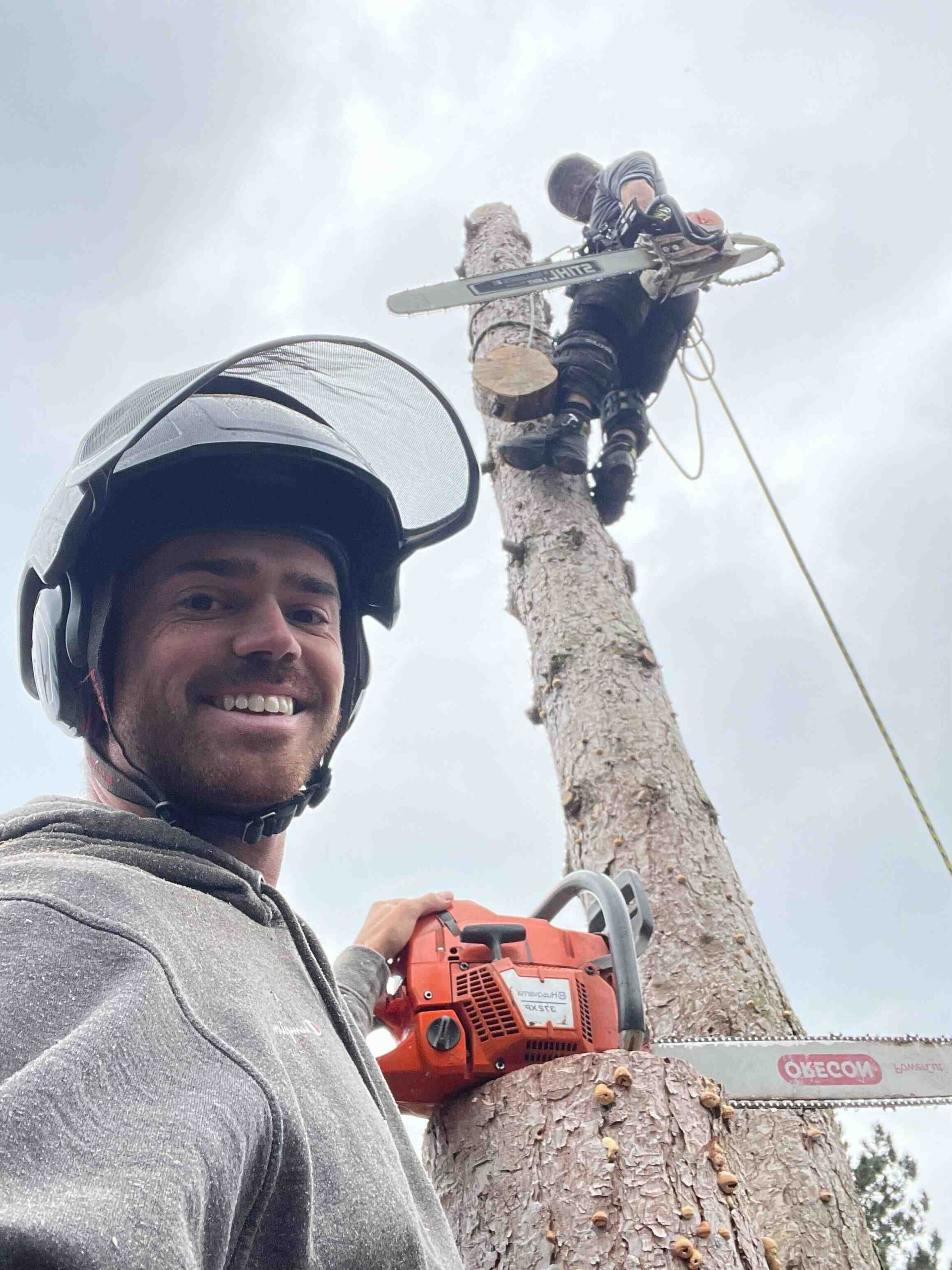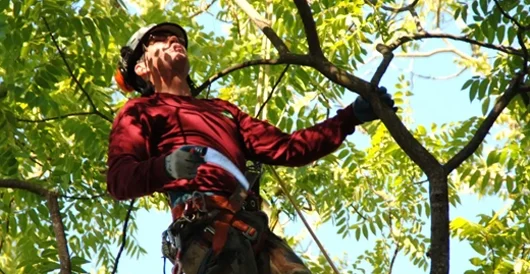Reduction of tree crowns is a form of pruning that is regulated to help minimize the overall height and spread of a tree without causing any harm to its health or natural beauty. Many people are confused about tree topping when in reality the two are one hundred percent different. Crown reduction is also concentrated on selective pruning that may involve a decrease in the number of tree branches up to 20-25 percent, at a time when the structure, stability, and beauty of the trees are maintained.

Reduction is a natural process where the crown is reduced by pruning it carefully to make it smaller.
The cost of tree cutting differs with the size and location of the trees or the skill of the arborist who is involved.
- Small trees (20-30 ft), medium trees (30-50 ft), and large trees (50-80 ft) cost an average of $250 to $525, $600 to 1300 and $1300 to 2200 respectively.
- Even large or complicated trees can be sold for above 3,000.
Such prices are inclusive of labor, cleanup and equipment, but the price can be higher in case there are power lines or obstructions around.
Crown Reduction Cost and Definition
The reduction in the tree crown is the selective pruning method where the tree is pruned to shorten the branches to the lateral (side) branches.
It maintains the natural shape of the tree and increases the safety and light penetration. The percentage of foliage to be cut per session must not exceed 20-25.
The price varies based on a number of variables such as the height of the tree, accessibility, density of the tree, its general health, and the contractor chosen, either an ISA-certified arborist or a general landscape worker. Certified professionals cost between 100 and 250 dollars an hour whereas the general labor costs between 50 and 125 dollars an hour.
Quick Pricing Reference
| Tree Size | Height | Average Cost | Range |
| Small | 20-30 ft | $250-$400 | $250-$525 |
| Medium | 30-50 ft | $700-$1,000 | $600-$1,300 |
| Large | 50-80 ft | $1,500-$1,800 | $1,300-$2,200 |
| Extra Large | 80+ ft | $2,000+ | $1,800-$3,500+ |
What Affects Crown Reduction Cost
- Tree Size (40% of total cost): Trees of more size need more crew members, climbing gear, and rigging equipment.
- Tree Species (20%): The heavy or multi-trunk species can have an extra 15- 25% cost because of the time spent on cutting.
- Accessibility (20%): Power line clearance is between 200-500 dollars, and space around the building may cost an extra 200-400 dollars.
- Level of Certification (10%): There is also the ISA Certified Arborist (between 100-250/hr) who are more expensive than general workers (between 50-75/hr) but offer safer and more accurate work.
- Tree Health (10%): Trees that are diseased or stressed would also need extra stabilization and cleanup care, which would cost an extra $100-250.
What is Tree Crown Reduction?
Crown reduction is the selective pruning of certain branches by cutting them back to vigorous lateral branches preserving the natural form of the tree, but shrubs are shrunk and structural pressure is relieved.

The 20-25 percent maximum harvesting law is used to guarantee that the trees are not too weak to photosynthesize well.
This approach does not involve shortening all the branches, but it selectively prunes to make the crown height and distribution even.
When it is done correctly, it will minimize storm risk, eliminate the possibility of interference with buildings or power lines, and even increase the life of mature trees that have exceeded their carrying capacity.
Key Principles
The 20-25% Maximum Rule
Do not cut out over 20-25 percent of the foliage of the tree at a time. Pruning further may have dire results, shocking or rotting the tree. Trees require an adequate area of leaves to synthesize and re-energize following pruning.
Proper Cutting Technique
The cuts should be made at the junction of the branch and never in the middle of a branch. The chosen lateral branch must be no less than a third of the diameter of the parent branch to grow healthily. This ensures that it is in the form of nature and not a flat-topped and unstable structure.
Benefits of Crown Reduction:
- Reduces storm damage risk by 30-50%
- Prevents power line interference
- Improves sunlight penetration to lawns and gardens
- Removes diseased or dead wood
- Extends tree lifespan by 10-20+ years
- Preserves the tree’s aesthetic shape
Crown Reduction vs Tree Topping – Why This Matters
It is important to understand that there is a difference between tree topping and the reduction of tree crowns. Topping also known as hat-racking is the act of removing the large upper branches (or even the top) of a tree and therefore eliminating 50-90% of the canopy in one fell swoop. It is regarded as one of the worst practices in arboriculture.

Crown reduction, on the other hand, uses selective cuts that are reduced to 20-25 which therefore retains health, structure and long-term stability.
Why Topping is Harmful

Immediate Damage
Topping eliminates 50-90% of the foliage of the tree and creates huge wounds (2-8 inch diameter). This leads to extreme stress and significantly decreases the capacity of the tree to generate food because of phototransduction.
Healing Problems
Topping can also leave large wounds and they can require 5-10+ years to heal, providing open access to disease and pests. The rot may be so deep into the trunk that many decades later the tree will be no sturdier.
Poor Regrowth
The trees that grow on the top generate the rapid yet weak water sprouts, whose attachment points are shallow, and thus, can easily be torn off during storms. This puts house owners in a never-ending re-topping loop after 1-2 years.
Long-term Consequences
Topped trees are known to succumb to chronic stress and infection in 5-10 years. In some regions, including Broward County, Florida, topping is officially classified as tree abuse and illegal under local ordinances.
Why Crown Reduction is Superior
Crown reduction gives smaller well-spaced cuts that heal faster. It has sufficient foliage to support photosynthesis and generates natural and stable growth of the branches.
Due to the fact that the structural integrity of the tree is not compromised, the reduction of the crown does not need to be repeated within several years, which is the most sustainable and professional.
When Should Crown Reduction Be Done?
The reduction of the crown must be done when the tree is in its dormant state, which is normally in late fall and early spring (November-March). This plan allows a cut time to heal prior to resuming new spring growth reducing pests and diseases.
Optimal Timing
Why Winter Works Best:
- Trees are dormant, reducing physiological stress
- The branch structure is clearly visible without leaves
- Wounds heal faster before spring growth
- Pest activity is minimal
Regional Variations:
- Southern conditions: September-February.
- Northern climates: October-February.
Do not prune in extremely hot summer or early spring when sap is flowing as it may cause stress and insect infestation.
Pruning Frequency
- Slow-growing trees (oak, maple): Every 2-3 years
- Moderate-growing trees (elm, birch): Every 1-2 years
- Fast-growing species (willow, ornamentals): Annually
The initial pruning followed by maintenance pruning normally incurs between $300 and 700 depending on the size of the tree and the accessibility.
Hiring the Right Professional

Blooma certified arborist will guarantee correct practice, sustainable safety, and elimination of irreparable errors, including topping.
What to Verify
Certification
An International Society of Arboriculture-certified arborist must always be employed. Request them to provide their certification number. Certified professionals are provided with a constant education and they are educated in tree biology and safe climbing techniques.
Insurance and Licensing
Make sure your contractor has a minimum liability insurance of 1 million US dollars and workers compensation under active cover. Demand formal guarantees, do not accept oral guarantees.
Written Proposal Must Include:
- Tree species and dimensions
- Exact reduction percentage (20-25%)
- Cost breakdown (labor, debris removal, equipment)
- Crew size and estimated duration
- Proof of insurance and certification
Red Flags to Avoid
- Cannot provide ISA certification number
- No insurance documentation or business license
- Suggests “topping” as a solution
- Provides vague or handwritten quotes
- Offers a price 50% below the market average
- Requests cash-only payment
Any of these indicate unqualified or uninsured contractors who may damage your trees or property.
FAQs – Quick Answers
Q: What are the 3 C’s of pruning?
A: Correct cuts, clean tools, and crown balance; these principles ensure health, safety, and structure retention during pruning.
Q: Does crown reduction reduce tree height?
A: Yes. It safely reduces height and spread by 10-25%, maintaining form without removing central leaders or major limbs.
Q: How much does a crown reduction cost?
A: Small trees: 250-525 medium trees: 600-1300 big trees: 1300- 2200. The prices depend on the species, availability, and the necessity to hire a certified arborist.
Q: Is crown reduction better than tree topping?
A: Absolutely. A decrease in crowns makes the trees healthy, strong and in their natural form. Topping causes stress, disease, and early death within 5-10 years.
Q: When should I get crown reduction done?
A: The best period is during late fall and early spring ( November -March ) when trees are dormant.
Q: How often should I reduce the crown?
A: Depending on the rate of growth and the surroundings of the tree, every 1-3 years.
Q: Can crown reduction help with power line conflicts?
A: Yes. It’s the correct way to manage clearance issues without damaging the tree. Expect an additional cost of $200-$500 due to coordination and safety measures.
Q: What’s the difference between crown reduction and removal?
A: Crown reduction charges between 800 and 1500 and leaves the tree. Full removal will cost 1500-5000+ and last indefinitely. The diseased or dangerous trees should only be removed.
Quick Summary
One of the easiest and secure ways of controlling the size of mature trees without affecting their health or beauty is by reducing tree crowns. This method will ensure that the canopy is not reduced to 20-25% of its original size hence a long-lasting, safer and better landscape.
The costs will range between 250 and 2,200 depending on the size and complexity of the tree. Always make your selection of an ISA Certified Arborist who is proven to have insurance and never has anyone on your tree top. When it is properly performed, a crown reduction will not only increase a tree’s life by 10-20 years, but also defend nearby buildings and help your landscape to keep a natural and well-maintained look.







